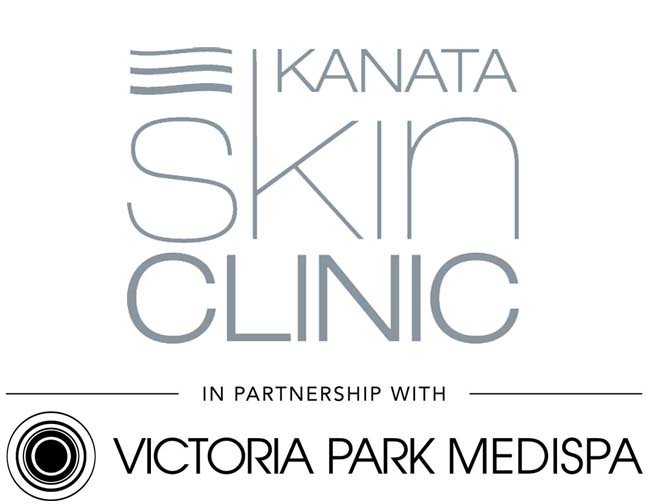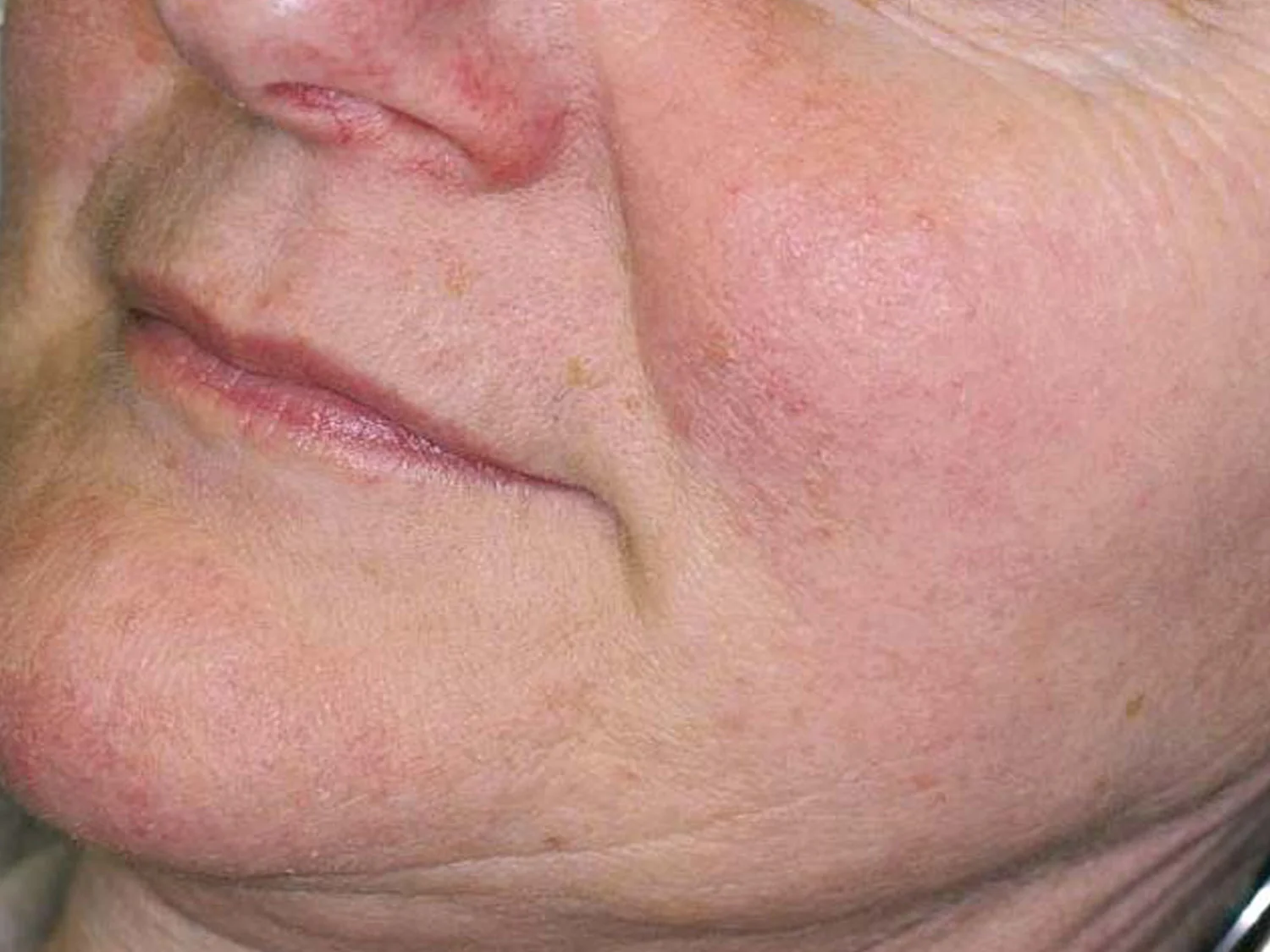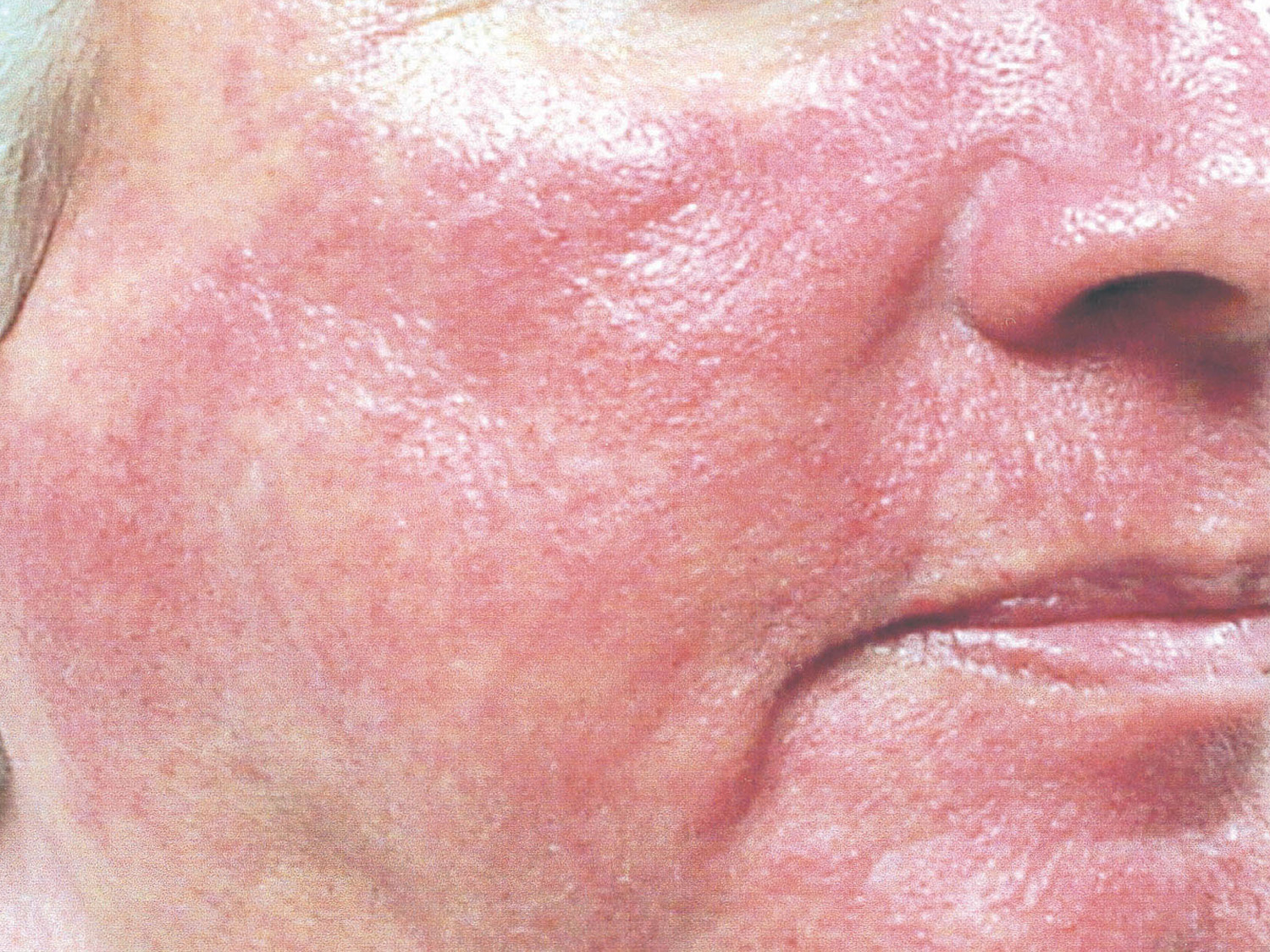Photofacial Ottawa
For a Clear, Even Skin Tone
A photofacial (also called photorejuvenation) is a skin treatment that uses broad-spectrum intense pulsed light (IPL) to target pigmentation and redness in the skin. This evens out your skin tone and removes imperfections, leaving you with more youthful, luminous skin. Photofacials can treat:
Sunspots and freckles
Sun damage
Rosacea and flushing (not including acne rosacea)
Spider veins and broken capillaries
Photorejuvenation generally consists of a series of 3 to 5 treatments, performed once every 4 to 6 weeks. Each session generally takes 30 to 90 minutes, depending on the size of the treatment area. The benefits of photorejuvenation treatments are achieved with little discomfort and minimal risk.
All of our treatments are performed by professional, fully qualified Medical Aestheticians and supervised by Dr. Erik Hegmann, M.D., so you can be sure that you'll be getting the safest, most effective treatment possible. If any questions or concerns arise, Dr. Hegmann will be there to take care of you.
Will Photofacials Work for Me?
Like any skin care treatment, photofacials may not work for everyone. It depends on the type of lesion, your lifestyle, your skin type, and even the colour of your skin. Skin rejuvenation treatments work best for light to medium skin tones. Darker skin types must be treated with extra care to avoid causing injury or discolouration.
To find out if photofacials are a good option for you, it is best to book a consultation with Dr. Hegmann and one of our qualified medical aestheticians. This will give them the opportunity to actually see what it is you are concerned about and review your medical history. They will then be able to make informed recommendations as to the best course of treatment and create a personalized treatment plan.
Photofacial Before and After Photos
How Photofacials treat Rosacea,
Flushing, and Spider Veins
How Photofacials treat Pigmentation,
Sunspots and Brown Spots
Why We Chose the Palomar Icon™ System
The SkinTel™ Melanin Reader
Safety
The Palomar Icon™ is the only Intense Pulsed Light System available in Ottawa that offers the patented Skintel™ Melanin Reader. This device measures the actual amount of melanin in your skin before each treatment, so the settings can be tailored precisely to your needs.
For example, if you had spent a lot of time in the sun since your last treatment, your skin will be more tanned. If the settings on the laser are not adjusted to account for your tan, you run the risk of being burned.
The Skintel™ will record a higher level of melanin in your skin, and the laser settings will be adjusted accordingly. This will ensure you receive a safe treatment every time, while still maximizing its effectiveness.
**No other system available today can offer you this level of protection.
Power
The Palomar Icon™ is the most powerful intense pulsed light system available today.
More power means each treatment will be more effective. And you will require fewer treatments.
Comfort
The Palomar's patented Advanced Contact Cooling™ system, cools the skin continuously during your treatment.
For a safer, more comfortable treatment.
Leading-Edge Technology
Palomar Medical Technologies is recognized as a world-leader in the research and development of cosmetic lasers. Many major advances in laser technology have been based on Palomar research.
This means you're getting the best treatment available on the market today.
Frequently Asked Questions
+ What exactly is a photofacial treatment?
A photofacial (also called photorejuvenation) treatment uses intense pulsed light (IPL) to reduce imperfections in the skin, including redness, spider veins, brown spots, sun spots, and other types of hyperpigmentation. It evens out skin tones and leaves your skin looking luminous and radiant.
+ What does a photofacial do?
A photofacial uses IPL to target dark spots and imperfections, which absorb the light, heat up, and are destroyed. Meanwhile, lighter pigment reflects the light and remains cool, which means only the darker lesions in your skin are destroyed, leaving you with a smoother, brighter, more luminous complexion.
+ What does it treat?
Photorejuvenation can be helpful in treating benign pigmented lesions, such as sun spots, freckles and other hyperpigmentation issues. It can also treat vascular lesions, including telangiectasias, rosacea, port-wine stains, hemangiomas, angiomas, and facial spider veins.
+ What are the benefits?
Photofacials improve the appearance of sunspots and sun damaged skin, uneven pigmentation, large pores, and the early signs of aging. The treatment also improves redness, rosacea, and broken capillaries.
+ Who is the ideal candidate?
The ideal candidate for a photofacial has lighter skin (Fitzpatrick Skin Types I - IV). If the skin is darker, more care must be taken, as it absorbs more of the heat energy released by the IPL device. Therefore, photofacials are not an ideal treatment for very dark skin types (Fitzpatrick Skin Type V).
+ Who cannot get photofacials?
As incredible as the results can be, they are not for everyone. People who have the following conditions are not good candidates for photofacials:
- People who have very dark skin (Fitzpatrick Skin Type V)
- People with melasma
- If you are pregnant or nursing
- If you have heat urticaria or a history of skin photosensitivity disorders, or a history of light-induced seizures
- If you have a history of hypertrophic scars or keloid formation
- If you are undergoing treatment for skin cancer, or have a history of radiation therapy in the area being treated
- If you have any form of blood disorders, or are taking anticoagulants or other blood-thinning medication
- If you have any open lesions or active infections
- If you are taking certain prescription and non-prescription drugs that can cause photosensitivity Please make sure to inform your medical aesthetician of any drugs and supplements you may be taking.
+ How much does it cost?
Treatment costs range from $200-$500 per treatment, depending on the area being treated. As several treatments are required to achieve maximum results, we offer a discount on packages of four treatments.
+ How long does the session last?
Typically, a session lasts 30-45 minutes, depending on the area being treated.
+ Is there anything I need to do pre-treatment?
In order to minimize any side effects, individuals preparing to undergo an IPL photofacial should avoid spending too much time in the sun or active tanning for at least 4 weeks prior to treatment. If that’s not something you can avoid, make sure you have SPF30 sunscreen on hand that contains UVA and UVB filters.
Avoid over-the-counter blood-thinning agents for at least a week prior to your appointment, including Aspirin, ibuprofen, and Aleve.
If you use a Vitamin A cream, such as retinol or tretinoin, or are taking Accutane, avoid using it for at least 30 days prior to treatment.
If you wear contact lenses, bring your case and solution as you’ll be required to remove them before the treatment begins. You should also ensure the treatment area is free of sunburn, suntan, cold sores, inflammatory acne, eczema, and hypo or hyperpigmentation.
+ Do photofacials hurt?
You will experience some mild discomfort, especially during your first treatment. However, Palomar's patented Advanced Contact Cooling™ system cools the skin continuously during your treatment to soothe the skin and provide maximum comfort.
The discomfort will decrease with each subsequent treatment, as the skin begins to clear and there are fewer targets to absorb the heat energy.
+ What can I expect after a photofacial?
After the treatment, your face will look like you've spent too much time in the sun and have a mild sunburn. Continually applying cooling-packs for the first few hours afterwards will help to reduce this redness. Typically, it resolves within a day.
If you are treating pigmented lesions, the spots will appear darker immediately after the treatment. However, within one to two weeks, these darker areas will naturally slough off and your skin will appear lighter, brighter, and more even-toned.
+ Are there any side effects? What can I expect during the recovery period?
There are very few noticeable side effects after a photofacial treatment. In fact, most people feel quite comfortable resuming normal activities immediately after treatment. Makeup can be used immediately following your treatment as well, as long as it is applied and removed gently.
For veins, the skin looks slightly redder immediately after the treatment for up to five days, as if you have a mild sunburn. This should resolve within 2 to 24 hours and can be soothed with cool compresses, if necessary. In rare cases, there may be slight bruising, which will fade after about a week.
For freckles and age spots, the spots look darker for up to a week before they slough off. Your skin will then begin to clear and will be fully healed after one month.
+ Is there any downtime after undergoing treatment?
Immediately after a photofacial, your skin will appear red, as though you have a mild sunburn. Applying cool packs for the first hour after treatment will greatly help this. Mineral makeup may be applied to camouflage any residual redness. Other than that, there is no downtime. Most people will not even know you've had a treatment.
+ How long does it take for an IPL bruise to heal?
Bruising is not normally associated with a properly performed IPL photorejuvenation treatment. If you experience any bruising after a photofacial, please contact our Clinic.
+ What do I need to do before undergoing a photofacial treatment?
Please stop using any prescription or over-the-counter topical vitamin A (retinoid) creams, such as Tretinoin or Tazorac, and any other creams that are used to exfoliate the skin for at least two weeks prior to your photofacial.
If you are susceptible to cold sores, you should take an antiviral prescription as directed prior to, during, and after your treatment. You can get such a prescription from your doctor, or from the medical director of your clinic.
Avoid direct sun exposure and tanning beds for at least four weeks prior to your treatment. If you have to be out in the sun, be sure to wear a good, broad-spectrum sunscreen with a high SPF and a wide-brimmed hat.
Do not use sunless self-tanning products for four weeks prior to the treatment.
If you start taking any new medication, or feel like you may be coming down with an illness, please make sure to let the medical aesthetician know.
+ What do I need to do after undergoing a photofacial treatment?
Immediately after your photofacial, your skin may feel hot and look like you've got a mild sunburn. Applying cool packs over the treated area will help to reduce any swelling and redness. This should be resolved within a few hours.
Mineral make up may also be applied immediately after the treatment.
Avoid taking overly hot showers, using hot tubs and saunas, or vigorous exercise for the first twenty-four hours. Wash the treated area with mild soap and lukewarm water for the next 24 hours, or until symptoms have subsided.
Avoid direct sunlight and tanning beds for the next two weeks, as your skin will be hypersensitive and more prone to hyperpigmentation. Wear a broad-spectrum sunscreen with a high SPF even if you don't plan on going outside.
If you were treating pigmented lesions, they will appear darker immediately after the treatment. Gradually, over the course of one to two weeks, they will rise to the surface and slough off. Avoid picking or scratching at them during this time.
Wait two weeks before you resume using any retinol creams or other exfoliants.
+ How many sessions will I need for optimal results?
A series of four treatments spaced four to six weeks apart are recommended to achieve maximum results.
+ When will I start to see results?
Typically, depending on the length and intensity of your treatment, you will see results after one to two weeks.
In some cases, a HydraFacial may be beneficial 2 to 3 weeks post-treatment in order to help slough off the old skin cells and pigmentation and encourage fresh, new skin cells to rise to the surface.
+ Are photofacials permanent? How long do the results last?
Your results should last at least a year from your last treatment. However, photorejuvenation is considered a way to control certain skin concerns, not cure them, and your skin cells will eventually return to their original state. For this reason, after their original series of treatments, many people prefer to return every year or so for a touch up to maintain their results.
+ Is it safe?
Photofacial treatments are extremely low risk. Palomar Medical Technologies is recognized as a world-leader in the research and development of cosmetic lasers. Many major advances in laser technology have been based on Palomar research. This means you're getting the best treatment available on the market today.
The Palomar Icon™ is one of the only Intense Pulsed Light Systems available in Ottawa that offers the patented Skintel™ Melanin Reader. This device provides a real-time measurement of the amount of melanin in your skin before each treatment, so the settings can be tailored precisely to your needs. For example, if you had spent a lot of time in the sun since your last treatment, your skin will be more tanned. If the settings on the laser are not adjusted to account for your tan, you run the risk of being burned. The Skintel™ will record a higher level of melanin in your skin, and the laser settings will be adjusted accordingly. This will ensure you receive a safe treatment every time, while still maximizing its effectiveness.
The Palomar's patented Advanced Contact Cooling™ system also cools the skin continuously during your treatment for a safer, more comfortable experience.
No other system available today can offer you this level of protection.
+ What are the risk factors involved?
There are very few risks involved with a photofacial treatment, as long as it is performed by a qualified medical aesthetician under the supervision of a medical doctor, and the post-treatment instructions have been carefully adhered to.
If the treatment is not performed properly, or the post-treatment instructions are not followed, there is a risk of skin burns during treatment, and hyper or hypopigmentation afterwards. In most cases, these will resolve on their own.
+ What type of training does my photofacial technician undergo?
Ideally, a photofacial technician will hold a diploma in medical aesthetics from a recognized aesthetic academy, and have several years of experience performing this type of treatment. They should also have additional training and certification from the manufacturer of the IPL device they are operating. Each device comes with its own specific protocols from the manufacturer. It's always a good idea to ask your technician if they have such training.

















